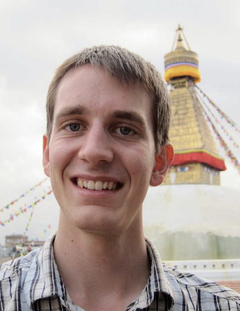Translations by Stefan Mang
English (130)
Stefan Mang, a student of Tibetan Buddhism since 2004, has been studying Buddhist philosophy and literary Tibetan since 2010. In 2010 and 2011 he studied at the Rigpa Shedra East in Nepal. From 2011 until 2018 he completed his BA and MA degrees at the Rangjung Yeshe Institute in Kathmandu. He works with Samye Translations and their Nekhor project.
Texts translated into English by Stefan Mang
Adeu Rinpoche
Adzom Gyalse Gyurme Dorje
Atiśa Dīpaṃkara
Buddha
Chatral Rinpoche
Chokgyur Dechen Lingpa
Dilgo Khyentse Rinpoche
Dodrupchen Jigme Tenpe Nyima
Dudjom Rinpoche
Fifteenth Karmapa
Fifth Dalai Lama
Gönpo Tseten Rinpoche
Jamgön Amnye Zhab Ngawang Kunga Sönam
Jamgön Kongtrul Lodrö Thaye
Jampal Dewe Nyima
Jamyang Khyentse Chökyi Lodrö
Jamyang Khyentse Wangpo
Jetsün Drakpa Gyaltsen
Jigme Lingpa
Lakṣmī
Minling Terchen Gyurme Dorje
Mipham Rinpoche
Ngakchang Shakya Zangpo
Nyala Pema Dündul
revealed by Nyala Pema Düdul
Nyangral Nyima Özer
Orgyen Lingpa
Rangrik Dorje
Sakya Paṇḍita Kunga Gyaltsen
Samten Lingpa
Shakya Shri
by
Shakya Shri
Sherab Özer
by
Sherab Özer
Shikpo Lingpa
Śrī Siṃha
by
Śrī Siṃha
Tai Situ Rinpoche
Tashi Tobgyal
Tertön Sogyal
Tsele Natsok Rangdrol
Tulku Urgyen Rinpoche
Tulku Zangpo Drakpa
revealed by Tulku Zangpo Drakpa
